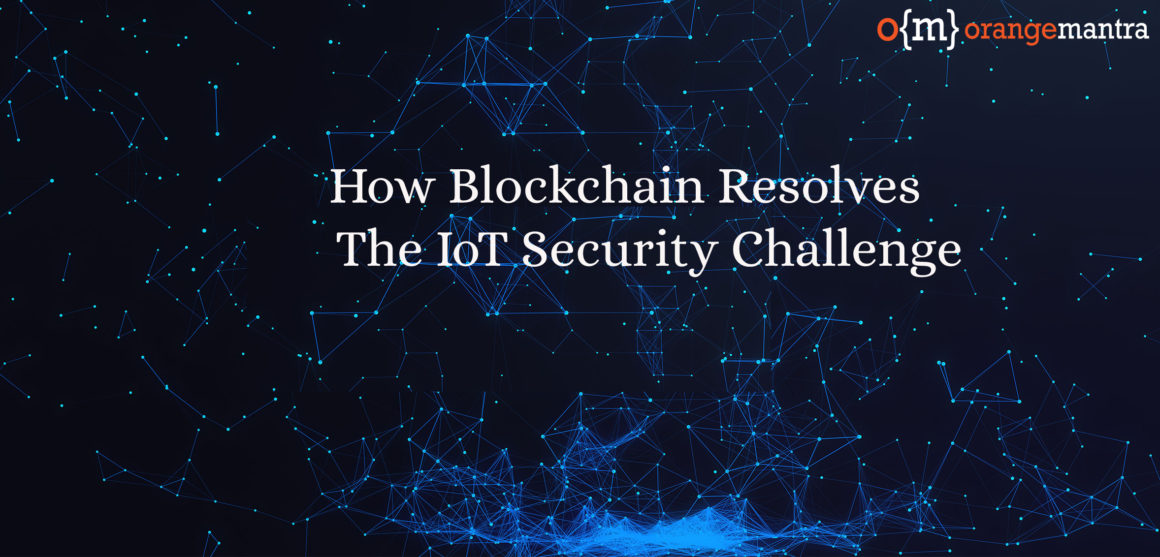The Internet of Things has emerged as one of the most powerful technologies for businesses today. With its potential to collect data from the connected “things”, it serves valuable insights for businesses that want to leverage the power of accurate, real-time data. But with the humongous opportunity that this technology brings, there comes the IoT security threat that businesses have to deal with. This is primarily because data is assimilated over the cloud from the connected devices, which makes it vulnerable to hacking attacks.
Despite this challenge, businesses are still keen about embracing IoT applications because of the extensive benefits they bring. The idea is to think of a resolution so that you can avail the best advantages that these have to offer. Before you embrace the technology, you need to share this concern with the IoT app development company you choose. Before thinking of a solution, there is a need to comprehend the actual security challenges with IoT in the first place. Let us explain how your business may have to deal with threats related to IoT implementation.
Keep a Watch on Major IoT Security Threats
Before eliminating a problem, it is necessary to reach its root. Therefore, you need to understand the threats that IoT solutions have to face.
Unauthorized Access
Unauthorized access to any of the devices can pose threat to the network as a whole. Considering the number and types of devices connected to the network, the risk multiplies with every device being added to the system. Something as simple as unencrypted data transfers or allowing employees to log into the network with a personal device can pose as a threat.
Data Breaches
Network implementation is an ongoing process, considering the numerous devices, standards, and protocols involved. This can leave gaps for attackers to make way into the IoT network. The data collected and transmission includes sensitive data, such as personal information, records, or confidential details. Data breaches occur when attackers intercept data traffic between IoT devices and backend systems, hampering the data confidentiality and integrity.
Lack of Secure Firmware
Software attacks on devices via malware and virus attacks can endanger the system as a whole. IoT entails machine-to-machine communication, without human intervention in data transfer between devices. Frivolous issues such as weak encryption and stray credential key can give the hackers access to data.
Privacy Violations
IoT devices may collect or transmit sensitive records without giving priority of encryption techniques. It raise concerns about privacy violations and data security. Unauthorized access of personal data collected by IoT devices can end into privacy breaches and issues of regulatory compliance.
Supply Chain Attacks
Unauthorized users target the supply chain model of IoT devices. This compromise manufacturing processes, software updates, or distribution channels. The attacker integrate malicious components or tampered software within the ecosystem. The team of IoT development company have reported that supply chain attacks can undermine the trustworthiness and security of IoT devices, posing major risks to end users and your business organizations.
Botnets and DDoS Attacks
Compromised IoT devices are later used by attackers as botnets, which are networks of infected devices managed by a central server. Attackers can implement large-scale Distributed Denial of Service (DDoS) attacks with botnets, targeting particular websites or online platform. The attack overwhelm the resources and render them inaccessible.
From problem to solution- Blockchain comes as a savior
For a business, digital transformation is a huge step but it is not easy, considering the challenges involved. Adoption of IoT is a part of this journey, which makes it critical to resolve IoT-related security issues to make a seamless move. One of the technologies that offers a tangible solution in this direction is Blockchain; in fact, it has emerged as one of the key IoT trends of the current times, all because it makes a reliable security measure. Here are some Blockchain use cases that indicate how the technology facilitates stronger security for IoT solutions:
Security by design
Being based on cryptography algorithms, blockchain is secure by design. Every single block on the network is hashed to the preceding block, which means that it is not possible to substitute an intermediate block. The secure design, therefore, makes the technology just right for rendering security for data on IoT devices and networks.
Safe Data Storage
Data security is a primary issue with IoT because the network and devices typically handle huge volumes of business-critical data. As Blockchain comprises a decentralized ledger with an unalterable data record, it becomes possible to control or protect communication taking place within the system. Data protection with this technology, thus, goes beyond only cryptocurrency and encompasses IoT networks as well.
Securing IoT networks and devices
Since blockchain technology is capable of monitoring and recording the communication between the connected devices, it provides the businesses with access to complete data on the activity logs of the IoT system. Further, they can keep track of suspicious logins attempts or unauthorized access of records, which strengthens the security.
Minimizing human errors
The involvement of human element in the IoT systems elevates the possibility of errors during data inputs, in addition to the risk of data loss, data thefts, and unauthorized modifications. With blockchain, it becomes possible to eliminate the need for passwords and logins Instead, devices can be issued an encrypted identity that can be validated on the distributed ledger.
Secure messaging between devices
Blockchain facilitates secure messaging between IoT-connected devices. It empowers messaging between devices with strong security standards with the use of smart contracts. This is very similar to the security of online transactions that Blockchain serves for e-commerce businesses.
Trust and transparency
Blockchain adopts a decentralized approach which improves trust and transparency between IoT devices, ensures tracking of all the connected devices and builds a fully resilient system which is less likely to fall prey to cybersecurity attacks.
Trends of Blockchain for IoT Security
Blockchain technology has capabilities to enhance IoT (Internet of Things) security by providing decentralized, advanced data storage and transaction mechanisms. Here are some trends to consider:
Immutable Audit Trails
Blockchain’s ledger enables development of secure audit trails for IoT devices and other data transactions. Every data exchange on the blockchain is easy to verify and audit, improving transparency and accountability within the IoT ecosystems.
Identity and Access Management
Blockchain-powered solutions can empower IoT device authentication and access control mechanisms. With the presence of decentralized identity protocols, IoT devices simply authenticate and interact with each other without focusing on centralized identity providers, lowering the risk of unauthorized access.
Data Integrity
Blockchain technology ensure the integrity of IoT data by linking data records to the source devices and timestamps. This supports stakeholders to trace the origin and transformation of data throughout its lifecycle, eliminating the risk of data theft or manipulation.
Smart Contracts for Automation
Smart contracts, and by default execution agreements integrated with predefined rules, can automate IoT security policies. For instance, adding smart contracts can trigger security actions or access controls depending on the predefined conditions, including detecting anomalies or malevolent access attempts.
Decentralized Device Management
Blockchain facilitates decentralized device management solutions, where IoT devices can register, authenticate, and communicate with each other with the help of cryptographic keys and blockchain-based protocols. Decentralized lowers reliance on centralized servers or intermediaries, improving resilience and scalability within the IoT deployments.
These above trends give proper information of Blockchain technology to serve security challenges in IoT deployments. It offer decentralized, transparent, and resilient solutions to secure IoT devices, data, and ecosystems. The technology is continuously evolving, its integration with IoT security frameworks will play a crucial role in protecting the integrity, and privacy of interconnected devices and systems.
Conclusion
Considering that Blockchain is capable of addressing the key security issues for IoT networks, it emerges as a technology that you can depend on for creating a more reliable ecosystem on which multiple devices can connect to the internet or the cloud. With its cryptographic algorithms, continuous monitoring, recording of threats, and validation of transactions, the technology makes it possible to resolve the security challenges plaguing IoT solutions. However, implementing both IoT and Blockchain together is a tough task, considering that both are complex and evolving technologies.
Here, it becomes essential to have a technology partner that has the right skills and expertise to blend them for creating fully-secure IoT solutions. At OrangeMantra, you can get access to a team of expert IoT development professionals along with a Blockchain developer to work together in collaboration. Share your requirements with us and we will create an empowering IoT application for your business.
FAQ’s
What are the security challenges with IoT devices?
IoT devices often have limited processing power and memory, making them vulnerable to hacking. Additionally, the vast number of connected devices creates a complex ecosystem with numerous potential entry points for attackers. Common security threats include:
- Unauthorized access: Hackers can gain control of devices to steal data, disrupt operations, or launch attacks on other devices.
- Data breaches: Sensitive data collected by IoT devices, like personal information or industrial secrets, can be compromised.
- Malware attacks: IoT devices can be infected with malware, turning them into bots for denial-of-service attacks or spreading malware further.
How can blockchain potentially improve IoT security?
Blockchain offers several features that can enhance IoT security:
- Immutability: Data stored on a blockchain is tamper-proof, ensuring the integrity of information collected by IoT devices.
- Decentralization: There’s no single point of failure, making it more difficult for hackers to compromise the entire network.
- Transparency: All transactions on the blockchain are visible to authorized participants, promoting accountability and trust.
Is blockchain a one-size-fits-all solution for IoT security?
While blockchain has immense potential, it’s not a silver bullet. Here are some factors to consider:
- Scalability: Public blockchains can struggle with the sheer volume of data generated by large-scale IoT deployments.
- Complexity: Developing and implementing blockchain solutions requires technical expertise.
- Cost: Implementing and maintaining blockchain solutions can be expensive.
When might blockchain be a good fit for IoT security?
Blockchain can be a valuable tool in specific IoT applications, such as:
- Supply chain management: Track the provenance of goods and ensure authenticity.
- Secure payments: Facilitate secure and transparent microtransactions between devices.
- Access control: Manage access permissions for different devices and users on the network.
What other security measures can be taken for IoT devices?
A comprehensive IoT security strategy should go beyond blockchain and include:
- Device security: Use strong passwords, keep software updated, and implement secure coding practices.
- Network segmentation: Isolate critical devices from less sensitive ones to limit the impact of a breach.
- Data encryption: Encrypt data at rest and in transit to protect sensitive information.
- Vulnerability management: Regularly scan for vulnerabilities and patch them promptly.
Where can I learn more about IoT security solutions?
Consult with cybersecurity experts to assess your specific needs and identify the most suitable security solutions for your IoT environment. Resources like industry reports, white papers, and conferences can also provide valuable insights.























